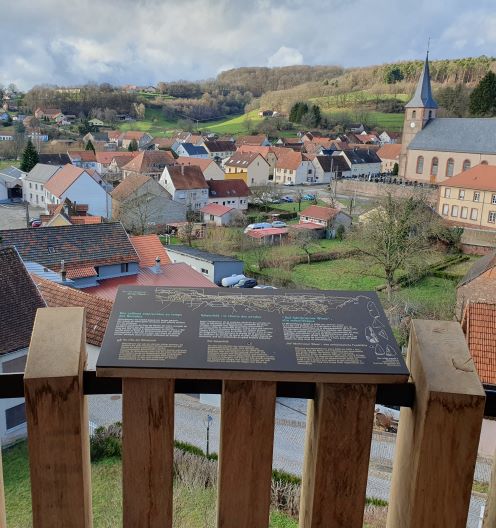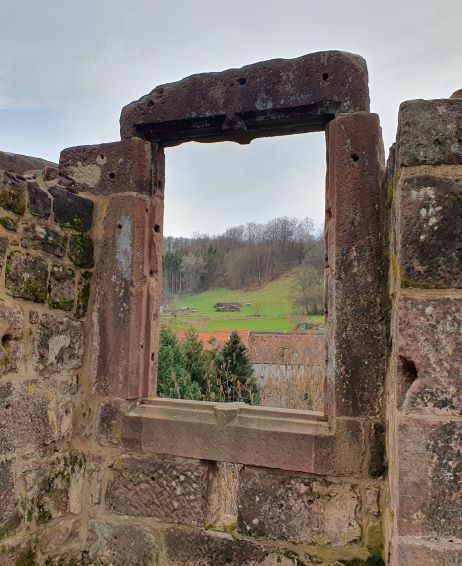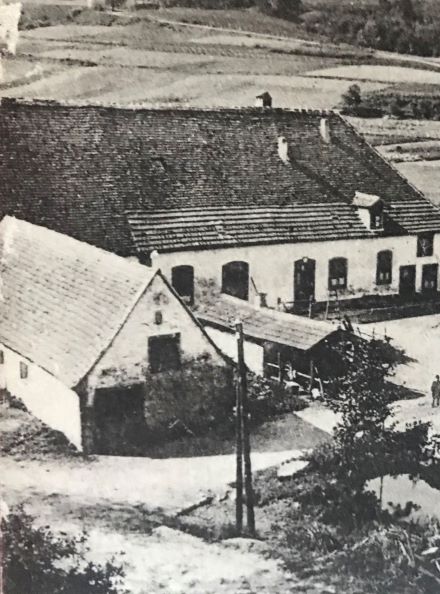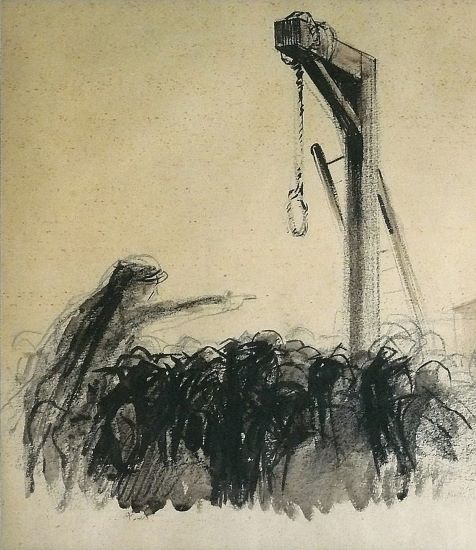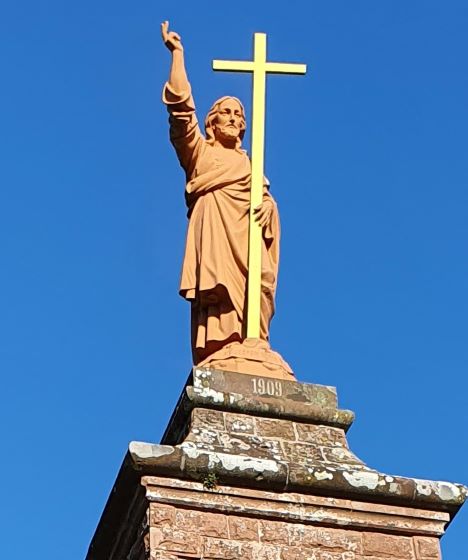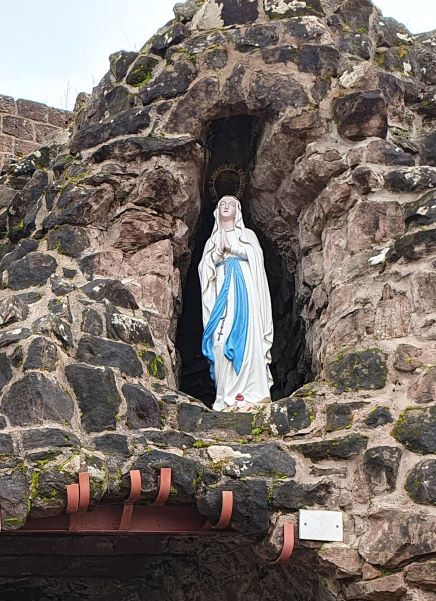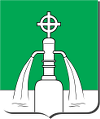
Welcome in Walschbronn
The famous Walschbronn baths and their bituminous water spring
" Among black, red and yellow petroleum, white petroleum is the most precious of all; it is clear and fluid like water; its odour is very penetrating, not at all unpleasant, although so singular that it can only be compared to itself. "
- Pierre Joseph Buc'hoz, 1731-1807, botanist, physician to the Duke of Lorraine, from the French mineralogical and hydrological dictionary, volume 1.
A renowned spa in the Middle Ages
The village is mentioned in the 12th century under the name Walsbronn (from Wallo, a Germanic man's name). The existence of a fountain, possibly the bituminous spring, may have given the village its name. Sixteenth-century writers extol the healing qualities of Walschbronn's waters and tell us that, in the 12th century, they were appreciated by the brother-in-law of the Duke of Lorraine, Emperor Frederick Barbarossa, who is said to have inaugurated the baths. Descriptions of the establishment could relate to the situation in the first half of the 16th century, when Emperor Charles V, himself suffering from rheumatism, took an interest in the spring. Weckersburg Castle, which had a certain splendour, was built at this time and was used to house spa visitors. The spa is located at the foot of the castle. A masonry well made of mortar-bonded ashlar, covered and protected by metal gates, stands next to a large building on the ground floor comprising cells equipped with vats to receive water from the spring, which had been heated beforehand.
The fame of the Walschbonn spring can also be seen in the number of renowned 16th-century scientists and doctors who took an interest in it by visiting it and/or using it in their work: These included Hieronymus Bock, the botanical physician from Hornbach; Martin Ruland, physician to Emperor Rudolf II; Jean Bauhin, botanical physician to the court of the Duke of Württemberg; and Helisaeus Röslin, a German physician who wrote that a white fat or oil smelling of petroleum floated on its surface. The famous doctor Jean Gonthier d'Andernach frequented the Walschbronn baths and, in 1565, described the virtues of the water as being linked to the presence of white, fragrant petroleum. In 1594, Thierry Alix wrote that the baths had once been much frequented and used mainly by people with limb abscesses. Analyses carried out in the 18th century concluded that the water contained only white petroleum and no other substance apart from a fine earth.
The spring and its location
The precise location of the wells or basins is not known, but the clues provided by the texts are consistent. The old bituminous spring is located below the rocky spur of Vosges sandstone on which Weckersburg castle was built. The spur forms a triangle between the valley of the Eppenbrunn brook and a small brook to the north.
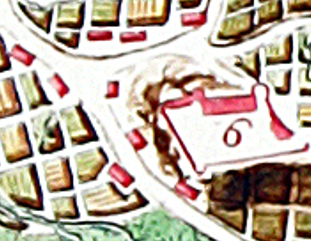
Boreholes drilled in the alluvial valley indicate a fluvial sequence up to 8 m thick: silt at the top, peat, sand and pebbles at the base. The name Schwarzbach, given to the lower part of the Eppenbrunn brook (downstream of the confluence with the small brook), is associated with the presence in the past of either peat beds or indeed bituminous water or tar rocks. The texts indicate that the spring or springs are located in the alluvial sands. A pavement of combustible black stones, probably asphalt, at the base of the spring catchment areas indicates the presence of a bituminous bed in the sands.
The "Bergwachs" or "white oil"
It is said that the bituminous water from Walschbronn, known as "Bergwachs " or "mountain wax ", cured all ailments, particularly rheumatism.
These waters are almost unique in Europe: at Walschbronn, a spring of 'white petroleum' was tapped, the virtues of which seem to have been known since ancient times, although the claim cannot be validated with certainty.
Some descriptions mention two flows in the "bituminous" spring: water from the water table (alluvial or from the Vosges sandstone) and rising water laden with hydrocarbons. The white matter is a paraffin, based on its combustion properties.
Apparently, the "bituminous" spring exists only in a small area that has yet to be precisely located. This arrangement, which is unique in the region, suggests a particular origin, probably the circulation and ascent under moderate pressure of water from an as yet unidentified geological formation, via a local fracture or a local porous well.
The bitumen cannot have come from the decomposition of the peat in the valley (Quaternary), or from the Vosges sandstone, which is considered to be sterile. The Pechelbronn oilfield is a long way away, and the likelihood of seepage from Tertiary oil formations towards Walschbronn can be ruled out. A source of hydrocarbons in the basement, beneath the Vosges Sandstone, is possible but remains to be demonstrated.
A slow decline in the Modern era
Under the reign of Jacques, the last Count of Bitche, the castle was in ruins and the baths were in poor condition, but could still be repaired. This was done, as in 1598 a sum of 100 florins was granted for this purpose. However, the Thirty Years' War led to the destruction of the baths and the village.
At the beginning of the 18th century, the spring was tapped in a wooden basin behind Mayor Oliger's garden, just below the castle. But by 1713, when Duke Leopold wanted to rebuild the baths, the pool was already partially buried. In 1750, an unsuccessful attempt was made to restore the pool, located forty yards from the Schwarzbach, but in 1756 King Stanislas sent his engineer to find the source. Excavations were carried out, uncovering a cased and sealed catchment into which a spring from the Oliger house flowed.
According to M. Germand, secretary of the Royal College of Physicians of Nancy, and M. Rougemestre, physician of Fénétrange in 1756 :
"Immediately below the castle is a beautiful house belonging to Jean Adam Oliger, the current mayor, opposite which he has established a small walled garden... A few years ago, I set out to verify for myself what ancient authors have told us about this fountain. I found the spring in the condition I have described, so neglected that it no longer looked as if it had ever been known. The ruins and the soil filled it in. A trickle of water came out of it and was lost forty yards away in the Schwartz, which flows through the valley. The water appeared dark green. In a glass, it was clear and limpid, almost odourless and with a bituminous taste. All I could see was a very thin film that looked like a pigeon's throat on the surface of the water. I knew that this was the white oil that I had been longing for, and that it drained away with the water as soon as it rose. That the ancients had formed a very deep well or basin, with good reason, in order to contain the reunion.
Based on this idea, I had some of the rubble that was blocking it emptied. I then saw that the spring started at the bottom and that it had been altered by streams of foreign water seeping through the earth. I tried various ways of containing them or bleeding them out elsewhere. I soon had the pleasure of collecting a small quantity of white oil and water that was truly impregnated with its particles. It would be very easy to restore this well and obtain a greater quantity of oil, by digging it deeper and lining its walls.
I continued this slow and arduous collecting process for several days, using a flat piece of wood that was a little dirty. The oil adhered easily to it and came off just as easily when I dropped it into a vase. I would have been well rewarded for my work, if continuous rain had not obliged me to interrupt it, without however abandoning the intention of resuming it at another time.
The following year, I promised myself greater success and even an easy repair of this well by persuading the inhabitants to contribute to the recovery of this natural treasure. But who could believe it? When I arrived, I saw that a public road had just been built over the fountain to join a road leading to Landau, two miles away in the Hanau. The current inhabitants, surprised by my reproaches, who had lost even the notions that popular tradition usually preserves, told me that there was another spring under the house of Clément Hanel, next to that of Mayor Oliger. I went down into his cellar and found nothing there but great dampness and a strong smell. I was told that during the winter there had appeared water similar to that in the fountain. I regard this as nothing more than a forced emanation from the real source. I also saw in a garden enclosed by simple hedges, below the new road, opposite the old fountain, a small spring contained in a wooden basin. The water seemed to me to be slightly similar to petroleum, but with a much smaller difference than the well. I left Walsbroon with the regret of not being able to pursue the following experiments any further."
At the same time, the Atlas of the County of Bitche states that "the well is now filled in and no longer visible; this spring still gives a few branches in the cellars and gardens below".
However, it is not known what happened to the spring after this work, and in 1766 it was declared dry.
Forgotten baths !
Today, its exact location is unknown. It is thought to be at the foot of the castle, perhaps under the rue Principale, or around the house on the corner with the rue du Château (the one with the Gorgon).
Several attempts were made to find it in the 20th century. In 1979, Walschbronn, Waldhouse and Bousseviller got together to launch a joint tourism strategy. In addition to plans for a lake in Waldhouse, an inn in Bousseviller and the classification of the ruins of the Weckersburg, there was the ambition to find this famous spring.
A newspaper article dated 10 June 1979 reported:
"Alongside the renovation of this castle, Walschbronn would like to realise a second idea, which, if it proves feasible, would undoubtedly have an even greater impact: to rediscover this famous spring, which is much talked about in the village and to which great therapeutic qualities are attributed. One thing is certain. This spring is not just the stuff of legend. It really did exist and the departmental archives prove it. In fact, it is said to be one of the only springs of its kind in Europe, the other being in Italy. However, there are now a number of problems, not the least of which are: how do we find it? Where will the money come from? Who will pay for it?".
Further investigations were unsuccessful.
The mystery of the spring remains.
The question of a spring sanctuary in Roman times
In his 1756 "Notice de Lorraine", Dom Calmet mentions the discovery of Roman baths visible in 1590, but 16th-century authors make no mention of this. Around 1760, there were reports of inscribed stones being replaced in the castle and of ancient inscriptions being discovered during work on the church, but without any details. Investigations in 1756 to find the source led to the discovery of coins and an inscribed stela, but there is no mention of this in the work report. Brought to Metz by the historian Dom Tabouillot but lost, it is suspected of being a fake. The inscription indicates that Centonius dedicated it to Apollo and Sirona and to the local nymphs in fulfilment of a vow. These two healing deities are also associated with a spring sanctuary excavated at Hochscheid, 100 km north of Walschbronn, where the presence of such an establishment remains, a hypothesis that can only be confirmed by archaeological research..
For more information
Alfred Weymann, an author from Saarbrücken, published a book in German in 1912 in which he reported all the known facts and writings about this spring. Some of the details are quite precise. The earliest writings date from the 16th century, including that of the learned and hard-working Thiery Alix, President of the "Chambre des Comptes de Lorraine".
Here is a summary and extracts from this book: Das lothringische Petroleumbad Walschbronn by Alfred Weymann.
